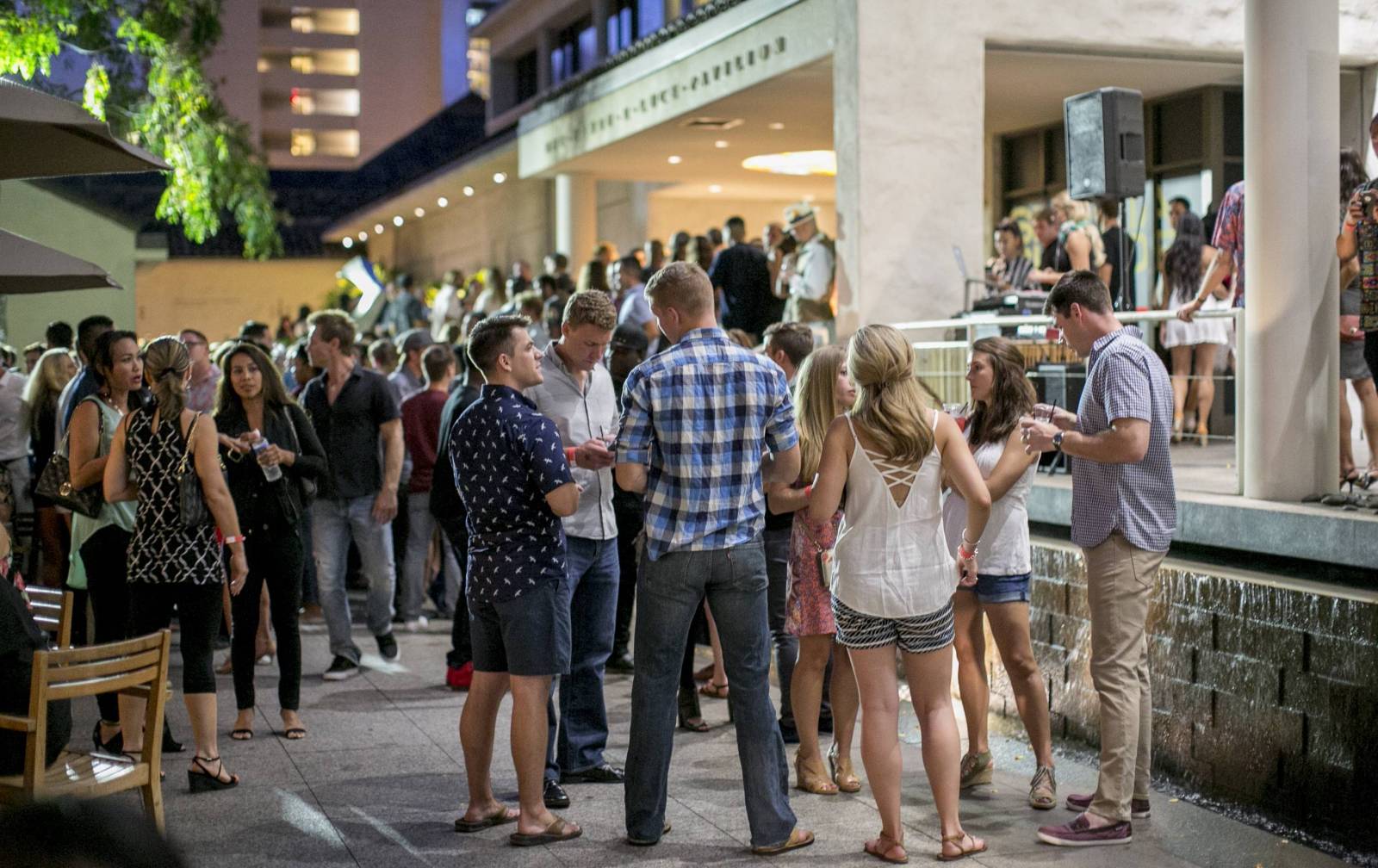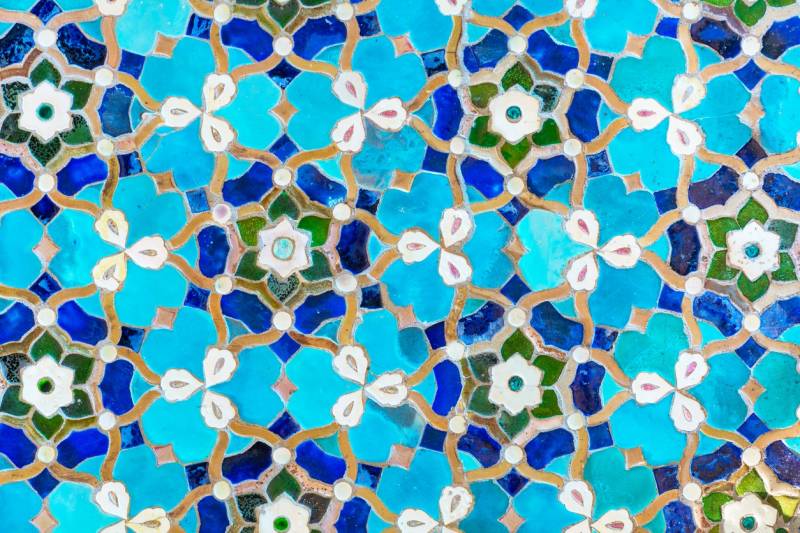Honolulu’s Lively Arts Scene Makes Hawai‘i Life More Colorful
O‘ahu’s North Shore is unequivocally the surf capital of the world. Ask just about anyone who has never been here and they’ll point to surfing as the island’s most recognized activity. But for those who have been here awhile—indeed, for those of us who live, work, and play here—our island home also has bragging rights to stunning beaches, challenging and diverse hiking trails for every ability, and some of the best dining around.
However, many transplants and visitors are surprised to discover Honolulu’s robust arts scene. Like all of Hawai‘i, we are an island of makers and creators. Perhaps it’s the year-round warm weather, the beautiful surroundings, or the more relaxed lifestyle that inspires Hawai‘i residents to create. We love to make stuff and we hold artists of all stripes—whether they are performance artists, painters, sculptors, seamstresses, weavers, or photographers—in high esteem.
Honolulu is home to a thriving arts scene, with a number of not-to-be-missed venues. Whether you’re a visitor or a local, we encourage you to experience all that O‘ahu has to offer with a visit of each of these inspiring venues that showcase the creative arts.
Honolulu Museum of Art
Located at the top of Ward Avenue, the Honolulu Museum of Art is architecturally unique, designed around several interior, open-air courtyards. HoMA, as it is known, is home to an enviable permanent collection of more than 50,000 art pieces from Europe, Asia and America, spanning a 5,000-year period. This permanent collection includes a considerable number of arts pieces from Hawai‘i. In addition to it’s permanent collection, HoMA hosts a calendar of compelling exhibitions throughout the year. Guided adult and youth tours of various length and scope are available, or you can simply meander about HoMa’s beautiful buildings and grounds on your own.

If you’re looking for something more interactive, we recommend HoMA’s wide array of classes. You can learn everything from ceramic arts, drawing, painting, poetry, glass and woodworking, or metal and jewelry making. If you’re looking for a unique, fun way to pass an afternoon O‘ahu, check out HoMA’s learning series to see if there’s anything of interest to you. While many of their offerings have multiple sessions, they also have single-serving (one day) learning opportunities. Explore your interest in oil painting for a few hours, before touring the rest of this beautiful gem in the heart of Honolulu.
When you’ve worked up an appetite, wander down Ward Avenue past the Blaisdell Center and the shining new Symphony building to Kaka‘ako–Honolulu’s hippest, most up-and-coming neighborhood. Currently undergoing an enormous re-development, this neighborhood that runs across the lower part of Ward Avenue is now home to urban-chic eateries, craft breweries, refurbished warehouses-turned-offices, boutiques, and increasingly, luxury high-rise condo developments.
On the last Friday of each month, check out ARTafterDARK, the Museum’s monthly themed art party that draws an lively crowd of as many as 2,000 art and party lovers. For details, check out our post entitled ARTafterDARK – Honolulu’s Premier Monthly Art Appreciation Event.
900 S Beretania St., Honolulu, HI 96814, (808) 532-8700, honolulumuseum.org

A monthly ARTafterDARK event in the interior courtyard of the Honolulu Museum of Art
Shangri La Center for Islamic Arts and Cultures
The former Honolulu home of heiress and philanthropist Doris Duke, Shangri La boasts one of the world’s largest and most renowned collections of Islamic art–an unexpected treasure trove of more than 2,500 objects of beauty and elegance. The home is the product of a sustained labor of love that spanned more than 60 years of Duke’s life. This very private property also served as her retreat from the world’s prying eyes, since she was one of the wealthiest and most famous women of her time.
Duke bequeathed the majority of her vast fortune to the Doris Duke Charitable Foundation. The home is managed through the Honolulu Museum of Art, with support from the Doris Duke Foundation for Islamic Art (DDFIA), whose mission is to promote the study and understanding of Islamic arts and cultures.

Doris Duke’s Shangri La as seen from the water. The retracting glass wall can be seen at left.
Tucked into the tony Black Point neighborhood that bridges the gap between Diamond Head and Kahala sits Duke’s stunning former home. It is a collection of less than a dozen streets, an area that was pastureland when Duke first set eyes on it in the 1930’s. Perched on the water’s edge, with views of both the sparkling Pacific and Diamond Head, the 5-acre property is truly spectacular.
Most notable is the design of the home itself. Completed in 1937, one of its most extraordinary features is a glass wall that retracts completely into the floor, turning the living room into an open-air space. Duke’s home and the several surrounding buildings are as architecturally interesting as their surroundings are beautiful. With architectural elements borrowed from India, Iran, Morocco and Syria, it is covered throughout with vibrant tilework, water features, lanais, inner courtyards and jalis, or screens, carved from marble that are as delicately beautiful as Duke was herself. It is resplendent with luxurious furnishings, textiles, rugs, and tapestries, collected on Duke’s many world travels across the Middle East, Europe, India, and Asia.

An example of the kind of intricately patterned tile work you might find at Shangri La, Doris Duke’s Black Point estate
Doris Duke’s Life
The most fascinating aspect of the tour is learning about Duke herself. In 1935, a young Doris Duke began a round-the-world honeymoon, departing from her family’s estate in New Jersey. Honolulu was their last stop before returning the U.S. mainland. In her early 20’s at the time, she and her new husband became so enamored with O‘ahu that they stayed on for several months.
Doris Duke led a remarkable and fascinating life that was never far from the gossip columns of her day. While she married twice, she remained childless and single in her later life. She was purported to have had love affairs with the likes of Errol Flynn and Hawai‘i’s own Duke Kahanamoku.
A woman of many talents and interests–the arts, horticulture, environmental conservation, and wildlife preservation–Doris Duke was the first non-Hawaiian woman to surf competitively. She learned from Duke Kahanamoku. Armed with an incredible wealth, she pursued her many passions and travelled on board a private 737, leading an intrepid and adventurous life for a woman of her time.

A statue of champion swimmer and surfer Duke Kahanamoku in Waikiki. He taught Doris Duke to surf.
Tours, Tickets, Parking
According to her will, Shangri La is now open to the public for viewing. Guided tours are held three times a day on Wednesdays through Saturdays. Tickets are available for purchase at the Honolulu Museum of Art, where the tour begins and ends. Visitors are restricted from parking in the Black Point area, so as not to disturb the residents. Parking is available at and around the museum.
The very informative tour lasts two and a half hours, including return shuttle time from the museum to Shangri La. Reservations must be made in advance and the tour costs $25 ($20 for Hawai‘i residents). Tours are free to Hawai‘i residents, students, and active-duty military on the first Saturday of every month. For more information, please visit the Honolulu Museum of Art website.
Please note: Shangri La is ONLY accessible through an organized tour that departs from the Honolulu Museum of Art. Cars are not allowed to park in the Black Point neighborhood.
4055 Papu Circle, Honolulu, HI 96816, (808) 734-1941, shangrilahawaii.org
Doris Duke Theatre
This hidden gem is tucked away on the back side of the Honolulu Museum of Art, and accessed through a separate entrance on Kinau Street. Unlike your average cineplex, here you’ll find independent, documentary and international films, in addition to lectures, concerts, and performances by local and visiting artists and performers. The 280-seat auditorium holds themed film festivals throughout the year (think: surf films, French films, or Italian filmography).
Here’s the best part: Admission is only $10, $8 for museum members, and kids under 17 get free admission to films and concerts. Like Shangri la, the Doris Duke Theatre is also supported through the Doris Duke Foundation. For show times and more information, check out the theatre website.
900 S Beretania St., Honolulu, HI 96814, (808) 532-6097, honolulumuseum.org
Bishop Museum
The Bernice Pauahi Bishop Museum, or more commonly the Bishop Museum, is named for the last descendant of the royal Kamehameha family, Princes Bernice Pauahi Bishop. Originally sharing space with the Kamehameha Schools for Boys, the museum was established to house the extensive collection of Native Hawaiian objects and royal family heirlooms belonging to the Princess. It has since grown to include millions of artifacts, documents and photographs of and about Hawai‘i, it’s people, and other Polynesian cultures.
Built by Mr. Bishop, the husband of Princess Bernice, the Polynesian and Hawaiian Halls were constructed on the Kapalama Campus, but the Kamehameha Schools moved to a new, larger campus in 1940. The Hawaiian Hall naturally is a celebration of the Hawaiian people’s rich history and culture. The Pacific Hall showcases the diversity and deep connections of the numerous peoples of Oceania.
Mission: Bishop Museum inspires our community and visitors through the exploration and celebration of the extraordinary history, culture, and environment of Hawaiʻi and the Pacific.
The Abigail Kinoiki Kekaulike Kāhili Room celebrates Hawaiian Royalty, or ali‘i, and the Nā Ulu Kaiwi‘ula Native Hawaiian Garden teaches visitors about the meaning and significance of specific plants important to the Hawaiian culture. Kids will love the Richard T. Mamiya Science Adventure Center, whose interactive exhibits focus on our unique environment, touching on the areas of study that are uniquely important in Hawai‘i: volcanology, oceanography, and biodiversity.
1525 Bernice St., Honolulu, HI, 96817, (808) 847-3511, bishopmuseum.org




Leave your opinion here. Please be nice. Your Email address will be kept private, this form is secure and we never spam you.